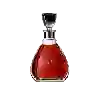Top 100 wines of Languedoc-Roussillon - Page 3
Discover the top 100 best wines of Languedoc-Roussillon as well as the best winemakers in the region. Explore the varietals of the wines that are popular of Languedoc-Roussillon and the best vintages to taste in this region.



































































































